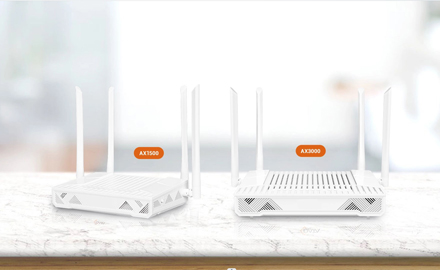Building an XG(S)-PON (10-Gigabit Symmetric Passive Optical Network) network involves a series of steps and considerations to ensure the successful deployment of high-speed broadband connectivity. From initial planning and design to installation, configuration, and optimization, each phase of the network construction process plays a crucial role in achieving optimal performance, reliability, and scalability. Let's explore in detail how to build an XG(S)-PON network:
1. Preliminary Assessment and Planning:
Before embarking on the network construction process, conduct a comprehensive assessment of the requirements, objectives, and constraints of the XG(S)-PON deployment. Identify the target coverage area, subscriber density, bandwidth requirements, and anticipated growth trends to inform the network design process effectively. Additionally, assess existing infrastructure, regulatory considerations, environmental factors, and budgetary constraints to develop a strategic deployment plan.
2. Network Design and Architecture:
Based on the preliminary assessment, design the architecture of the XG(S)-PON network to meet the identified requirements and objectives. Define the layout of the optical distribution network (ODN), including the placement of Optical Line Terminals (OLTs), Optical Network Units (ONUs), splitters, and fiber-optic cables. Determine the topology, fiber routes, and equipment placement to optimize performance, minimize signal loss, and ensure scalability.
3. Equipment Procurement and Installation:
Procure the necessary equipment and components required for the XG(S)-PON network deployment, including OLTs, ONUs, optical splitters, fiber-optic cables, connectors, and termination boxes. Ensure that the selected equipment complies with industry standards, interoperability requirements, and scalability considerations. Install the OLTs, ONUs, and passive optical components according to the network design specifications, following best practices for fiber-optic cable management, termination, and splicing.
4. Fiber Optic Cable Installation:
Deploy fiber-optic cables to connect the OLTs, ONUs, and passive optical components within the XG(S)-PON network. Adhere to industry standards and guidelines for fiber optic cable installation, including proper handling, bending radius, termination, and testing procedures. Use aerial, underground, or aerial-to-underground deployment methods based on the specific requirements of the deployment environment and local regulations.
5. OLT Configuration and Provisioning:
Configure the OLTs to establish the backbone of the XG(S)-PON network infrastructure. Configure port settings, VLANs, Quality of Service (QoS) policies, security settings, and management interfaces according to the network design specifications. Provision subscriber services, allocate bandwidth, and establish logical connections between the OLTs and ONUs to enable broadband connectivity for end-users.
6. ONU Installation and Activation:
Install and activate the ONUs at subscriber premises to facilitate access to the XG(S)-PON network. Configure the ONUs with appropriate settings, including VLAN tagging, service profiles, authentication credentials, and network parameters. Test the connectivity and performance of each ONU to ensure proper installation and activation, addressing any issues or discrepancies promptly.
7. Network Testing and Optimization:
Conduct comprehensive testing and validation procedures to verify the functionality, performance, and reliability of the XG(S)-PON network. Perform optical time-domain reflectometer (OTDR) testing, optical power measurements, and signal quality assessments to identify potential issues such as fiber attenuation, signal loss, and optical reflections. Optimize network parameters, adjust configurations, and fine-tune performance settings to maximize throughput, minimize latency, and enhance overall network efficiency.
8. Documentation and Training:
Document the XG(S)-PON network configuration, topology, equipment inventory, and testing results for future reference and maintenance purposes. Provide training and educational resources to network administrators, technicians, and end-users to ensure proper operation, troubleshooting, and maintenance of the network infrastructure. Document standard operating procedures, troubleshooting guidelines, and best practices to streamline ongoing network management and support activities.
9. Maintenance and Upgrades:
Establish proactive maintenance procedures and protocols to monitor the health and performance of the XG(S)-PON network continuously. Implement regular inspections, software updates, and preventive maintenance tasks to mitigate potential issues and ensure optimal network operation. Plan for future upgrades and expansions to accommodate growing bandwidth demands, technological advancements, and evolving user requirements effectively.
By followingthese steps and best practices, network operators and service providers can build a robust, scalable, and future-proof XG(S)-PON network infrastructure capable of delivering high-speed broadband connectivity to residential, enterprise, and municipal users alike. Effective planning, meticulous execution, and ongoing maintenance are essential for maximizing the performance, reliability, and longevity of the XG(S)-PON network, enabling organizations and communities to unlock the full potential of fiber-optic telecommunications technology.




 The Difference Between AX1800 ONU and AX3000 ONU
The Difference Between AX1800 ONU and AX3000 ONU
 How are Huawei OLTs Classified?
How are Huawei OLTs Classified?
 The Future Trend of Optical Line Terminals (OLTs)
The Future Trend of Optical Line Terminals (OLTs)
 The Difference Between ONU and ONT
The Difference Between ONU and ONT